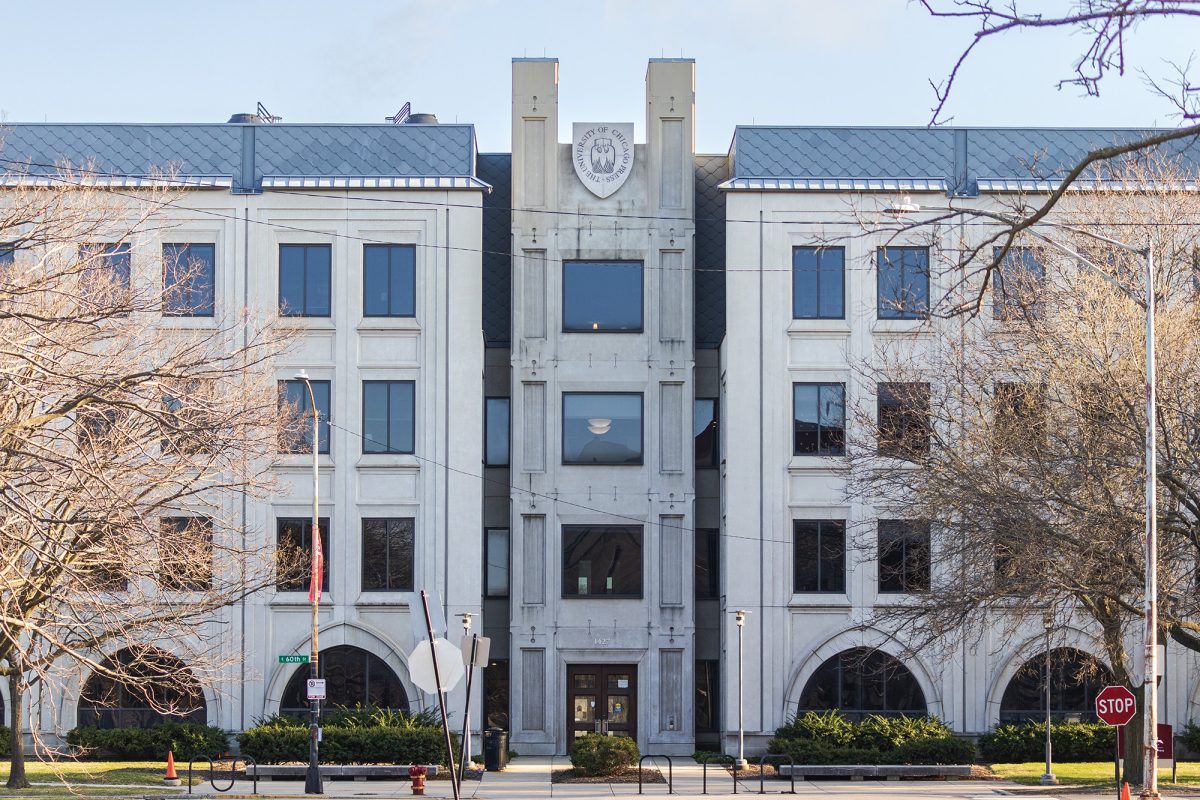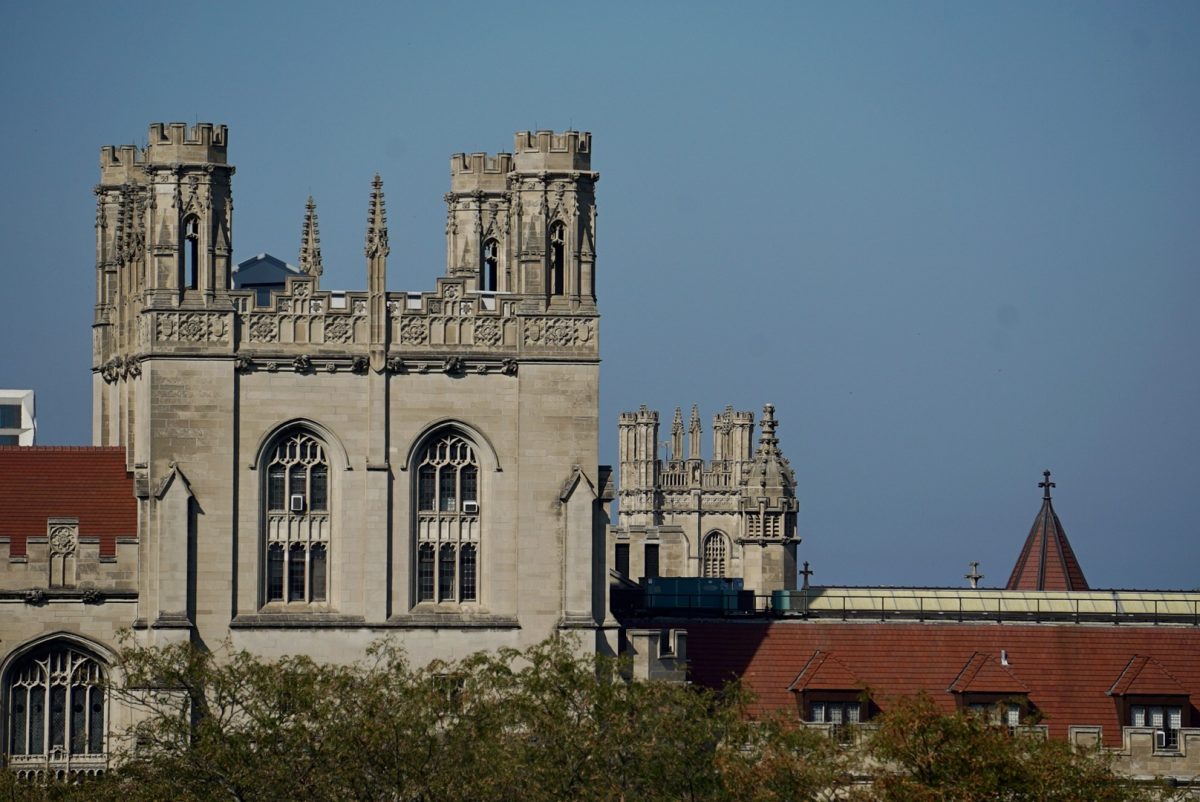The Chicago Department of Transportation (CDOT) has begun the early stages of a controversial renovation project at Promontory Point, according to documents obtained by the Promontory Point Conservancy advocacy group earlier this year.
Meanwhile, the Conservancy commissioned a coastal engineering study of the Point that showed the Point’s historic limestone revetments were “structurally sound… and may be easily rehabilitated,” according to an April 30 press release.
The Conservancy, known as the driving force behind the “Save the Point” movement, and other advocates worry that a rehabilitation plan will inevitably destroy the historic limestone and replace it with the concrete that now lines most of the city’s shoreline. The wider Chicago Shoreline Protection Project, of which the Promontory Point rehabilitation is a part, prioritizes “concrete steps and promenade to replace the existing stones,” according to the city’s website.
CDOT issued a request for proposals (RFP) in December seeking offers to conduct a design study for the proposed overhaul of the Point’s Chicago Landmark status. The study would include tests on the historic limestone revetments that surround the park.
In February, after the Conservancy obtained the RFP, CDOT spokesperson Erica Schroeder confirmed ongoing plans in a statement to the Hyde Park Herald. She wrote that the design study “will encompass a broad scope of work over the next few years, including planning, preliminary design, a public engagement process, and the creation of detailed construction drawings and specifications.”
Schroeder also said a contract would be finalized in “the next few months.”
The project is a joint effort by CDOT, the Chicago Park District (CPD), and the Chicago division of the U.S. Army Corps of Engineers (USACE). Mike Padilla, the senior project manager for the Chicago USACE district, told the Maroon in an interview that CDOT has chosen a contractor for the project but has not announced its choice to the public.
The CPD first proposed replacing the Point’s limestone steps with concrete over two decades ago. The proposal met strong local opposition. Last year, the Chicago City Council voted to designate the Point as an official Chicago Landmark, offering additional legal protections that preservationists had sought.
However, Jack Spicer, the Conservancy’s founder and president, said the City can work around those regulations.
“There’s a big loophole here, which is public safety,” he told the Maroon. “They declare [the limestone revetments]—which they have done privately—[are] failed and dangerous, and therefore they have an excuse to ignore the landmark designation’s restrictions.”
Padilla described the Conservancy’s worries as misguided.
“There’s this misunderstanding that somehow the city and the Corps disagree with that [historic preservation approach],” he said. “It was 20-some years ago that the city had developed plans to do Promontory Point with concrete and that met all this resistance from the community. And they stopped that plan, and they haven’t brought the plan forward, no matter what anybody tells you.”
The Conservancy in February obtained an image created by CDOT and SmithGroup, a contractor, that depicts a wide concrete area alongside limestone revetments at Diversey Harbor, a park on the North Side, and cites it as an example of a “preservation-based approach.”
In an accompanying statement, the Conservancy cast doubt on the CDOT’s intent to prioritize preservation. “We are concerned that the City’s commitment goes only as far as to open up a loophole big enough for a fleet of concrete trucks,” the Conservancy wrote.
City officials have repeatedly denied any intent to replace the historic limestone. In her February statement, Schroeder wrote that the city was “fully committed to the preservation of Promontory Point… [and] saving and reusing as much of the existing limestone as possible, as part of a rehabilitation effort that is consistent with the Secretary of Interior Standards for Historic Preservation to protect Promontory Point for future generations.”
Schroeder later told the Chicago Reader that concrete in the Conservancy documents “is not relevant to what is currently being considered for Promontory Point, as it is not the intent of the City to construct a concrete revetment at the Point.” She reiterated that there was “no intention of replacing the limestone with a continuous concrete revetment” in a letter to Hyde Park Alderman Desmon Yancy after the Conservancy released its coastal engineering study.
“You can imagine, when you’re doing an engineering assessment, you’ve got to go through something of a process before you can say, ‘This is what I’m going to do exactly out there,’” Padilla said. “They haven’t gone through that yet, but they have gone as far as they can to say they’re going to do this from a historic standpoint, to utilize as much of the limestone as possible, maybe even bring limestone in.”
Padilla highlighted efforts to amend the 1993 Memorandum of Agreement (MOA) outlining how the project adheres to historic preservation standards.
“We thought it would be a good idea to amend it because back then they didn’t get into a lot of detail about what the parties are supposed to do,” Padilla said. “We think we can improve on that to lay everybody’s mind at rest, to [show] what we’re going to do to coordinate with the community.”
According to Padilla, the city has negotiated with the Conservancy and other community members on a draft amendment and is holding off on starting the design study until an agreement is reached.
Debra Hammond, the Conservancy’s treasurer, wrote in an email to the Maroon that the group’s negotiations with USACE had happened “a year ago.”
“The Corps is conveniently underfunded for community engagement these past nine months and cannot talk to us anymore,” she wrote. “The City is racing ahead without an amended MOA in place, which means the 1993 MOA governs any and all design work.”
The Conservancy has also noted the unusually high cost of the design study, which Schroeder’s statement confirmed will be around $5 million. The Conservancy’s own coastal engineering study of the Point cost only $252,000, while the USACE Chicago district, a partner in the CDOT project, had previously estimated the cost of a design study at $450,000, the advocacy group said.
Padilla said that design studies were usually around 10 to 15 percent of estimated overall costs, with the $5 million price tag “in the ballpark” for a project last estimated at $57 million in 2012.
A representative for CDOT did not respond to requests for comment. Zak Morched, the assistant press secretary for the CPD, initially offered to connect the Maroon with a representative for comment but did not respond to further attempts to schedule a meeting.
“In the Army Corps meetings, they’re like, ‘Shoreline protection or preservation,’” Hammond said in an interview with the Maroon. “That’s a false either-or. What if you can do both?”
The Promontory Point Conservancy’s Report
On April 4, the Conservancy released a coastal engineering condition study with findings that the Conservancy claims contradicts the City’s conclusions on the limestone revetments’ safety at the time. In a press release, the Conservancy argues “the iconic blocks currently in place along the Point’s shoreline are structurally sound… and may be easily rehabilitated.”
The findings, conducted by third-party McLaren Engineering Group, suggest repair and rehabilitation is financially and culturally favorable compared to the alternative of a concrete replacement.
McLaren Technical Services, the part of McLaren Engineering Group that provides services in “waterfront inspection, design, and construction,” sent a team of professional engineer divers to evaluate the Point’s health and adherence to damage protection standards. Using observations taken from an unmanned aerial system (UAS) between May and June 2023, the group mapped a 3D model to identify causes for initial damages and grounds to minimize future erosion.
The study split the Point into six unique sections, further characterizing each section as having common components such as “upland,” “revetment,” and “promenade.” For example, the section with concrete “coffins” that look like benches requires the most maintenance in the upland and promenade subgrade. The upland, consisting of grassy parts of the Point and grass and dirt that is an intermediary to the sidewalk, has experienced erosion because of poor drainage of waves crashing past the revetments. In some sections, the erosion affects the area as great as 20 feet inland of the revetments. Additionally, the subgrade, the surface beneath the concrete promenade, is subject to erosion but “exhibits no sign of imminent failure.”

However, the revetments were given “satisfactory” and “fair” assessment ratings across the six delineated sections of the Point. Some subgrade material interior to the limestone was found during probing to be completely gone or requiring pressurized cementitious grout to maintain the limestone’s structural integrity.
Ultimately, McLaren found, “the current revetment and promenade structure provides adequate storm damage and shoreline protection despite needed repair and maintenance.” The most impacted areas only have 25 percent considerable deterioration, much of which is “purely aesthetic” and not damaging to its functionality. McLaren estimates “the number of blocks actually requiring replacement is in the dozens, rather than hundreds.”
Three pillars have been identified by the study for necessary repairs of the Point. Firstly, replace the fill material providing structural support underneath the limestone revetments and limestone/concrete promenade. Secondly, install a new timber cradling system, which uses timber piles to hold the subgrade in place. Lastly, fix the upland erosion with better drainage options.
While not explicitly required for its survival, both McLaren and the Conservancy are in favor of ADA accessibility options to widen the scope of community members that can access the Point. The two parties seek to release an Alternative Design Study Report in the near future with the estimated financials for these improvements. Furthermore, any proposal put forward in the future report, they anticipate, will be a cheaper alternative to uprooting the limestone and replacing it with concrete. The timeline of developing cost estimates was not stated in the initial study.
Padilla expressed openness to the study’s recommendations.
“We haven’t reviewed it in depth, mainly because we haven’t started that process,” he said. “But we don’t dispute it at all—it’s an objective assessment.”
“We have nothing against using limestone,” he added. “It’s a very durable material, and obviously now that it’s on the National Register of Historic Places, that’s a huge consideration. We’re looking forward to moving forward the design to show the community that we’re on board with the things that are important to them.”
















Heather Dalmage / May 28, 2024 at 7:34 am
We are engaged in a similar battle to have the community’s vision for our shoreline included in the planning for 45th to 51st. Same players (USACE, CDOT, PARK DISTRICT – managed by the Public Building Commission — perhaps Public Building Omission would a more apt title). The lack of honesty and transparency—is matched by the lack of concern for the community. They want the generic lakefront, we demand our unique space. We are unique. We are Hyde Park, not Lincoln Park.